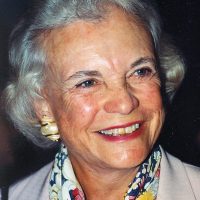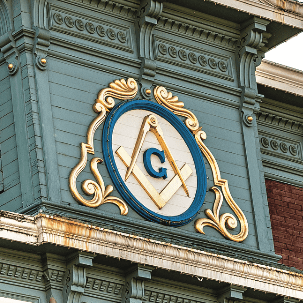
With ‘The Pentaverate,’ Secret Societies Are Suddenly Everywhere on TV
Led by ‘The Pentaverate’ and ‘The Lost Symbol,’ allusions to secret fraternal organizations based on Freemasonry are suddenly everywhere.
By Drea Romer
When the International Order of the Rainbow for Girls was founded in 1922, two years after women earned the right to vote, it aimed to build in its members a sense of “good citizenship and sound character.” Now, as the Masonic youth order celebrates its centennial, there’s an opportunity to look back on all that’s changed—and all that hasn’t. Because with Rainbow Girls, there remains a strong sense of tradition that leaders say is part of the appeal. “Our pillars are leadership, sisterhood, and service, and that will never change,” says Dejah Urbanovitch, who joined in 1998 and now works with an assembly in the San Fernando Valley. “Some things are just timeless.”
That feeling permeates the organization. Of course, it’s most visible in the dress code, which mandates floor-length or “tea-length” dresses, depending on the context. Rather than stand out as anachronistic, these elements can be a draw, members say, particularly at a time when tradition has become an anomaly. However, the order’s greatest value lies in the camaraderie and mentorship its members offer.
Every two weeks, they get hands-on training in leadership competency. They create budgets and proposals for events, discuss how to better their communities, and learn strong public-speaking skills. Each year the grand worthy advisor (the highest-ranking youth member) chooses a statewide service project that members organize around all year long. Recent projects include fundraising for food banks, helping families in need of housing, and raising money for cancer research and care.

Colleen Penaluna, who joined the Roseville assembly of Rainbow Girls at 12 and served as grand worthy advisor in 2015–16, says those skills helped her land a job out of college. “Understanding that you have tangible experience makes you feel so much more confident when you go into that interview, ask for that raise, or start your own business,” she says.
Today there are 53 assemblies active in California. As with many other service groups, that’s a far cry from its peak in the 1970s. While Rainbow’s leaders are acutely aware of the challenges facing organizations like theirs, they’re adapting as best they can. Dana Regier, the supreme inspector of the California chapter of Rainbow Girls, points to how members use social media to promote events and stay in touch. There’s also Beyond the Line, an online leadership-training program. So far it has an 85 percent participation rate. Among the skills it covers is image management, particularly relevant in the internet era. Both, Regier says, are examples of Rainbow Girls adapting to the times.
That said, those close to the organization hit a familiar, and old-fashioned, refrain when discussing Rainbow’s future: a sense of seeking, belonging, and finding purpose. “At the end of the day, they’re all just girls trying to navigate the world to the best of their ability,” Urbanovitch says. “That’s never going to change.
Visit gocarainbow.org to learn more about Rainbow for Girls in California.
Above:
Members celebrate at the General Assembly, held this Spring in Fresno. Photo by Mark Read.
A few notable alumnae of the International Order of the Rainbow for Girls:

Dorothy Metcalf-Lidenburger,
NASA Astronaut

Sandra Day O’Connor,
First Female Supreme Court Justice

Olmpia J. Snowe,
U.S. Senator (R-Maine)
PHOTOGRAPHY BY
Mark Read

Led by ‘The Pentaverate’ and ‘The Lost Symbol,’ allusions to secret fraternal organizations based on Freemasonry are suddenly everywhere.

How Napa Valley Masonic Lodge No. 93 used its greatest asset—the impressive Ritchie Block building in St. Helena—to pay it forward.

A Latin folk musician and Freemason, Alejandro Laborde goes behind the Masonic meaning of some of his favorite lyrics.